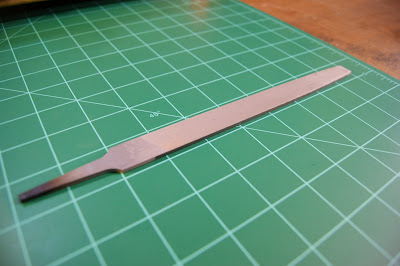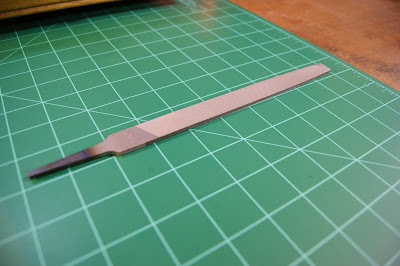As a machinist, I use hand files a lot. It helps to deburr a recently machined work piece, produce an angled cut or bevel known as a chamfer, or it can be “drawn” across a surface to improve a finish. These can be especially helpful to the frugal crafter. If money isn’t available to purchase a belt sander or some other powered abrasive tool, then go with a hand file. It’s a much cheaper, time-honored, hand-powered alternative for removing material – just be prepared to spend much more time on the project.
There are quite a lot of different types of files and rasps. There’s even been a Treatise on Files and Rasps published in 1878 by Nicholson. And if you’re not at all interested and you’re having trouble sleeping at night, I recommend it for reading. I realize that many would find this too technical a read and probably incredibly boring but I’ve always been interested in it. I’m the type of person that enjoys reading a wide range of mostly technical subjects from various blacksmithing techniques to modern CNC machining methods or from a biography of gunsmith and inventor John Browning to ancient technologies such as those by Greek engineers like Archimedes.
I have two types of files: one set for beating up, hard shop use, and another set for long term shop use. I have a cheap Craftsman set that comes with a small range of typical files a mechanic might need for general-purpose use. I also have a set of Nicholson files, which are usually more expensive and often purchased individually. Those are the files I intend to treat with a little TLC. For example, I’ll store them as best as I can in a way that prevents them from bumping into each other in a tool drawer. One of the quickest ways to dull or chip the teeth on a file is to store them in a drawer loosely so that they rattle each other every time the drawer is opened and closed. To keep them clean, I’ve got a card file – which is just a technical way of saying file brush. Also, using oil or chalk on the files will lessen clog-up from shavings. I don’t plan to use oil because it will be too messy but chalk should be fine. Some people swear that they see no noticeable improvement in the file staying clean due to the chalk but in my experience it makes a big difference. Shavings are less likely to “gum up” the file teeth and the file is just easier to clean.
El mucho cheapo. My Craftsman file set for general shop use.
"Chalking" a file.
















I didn't know that it was important to keep files sharp. I figured they were one of those types of tools that kept themselves going. When I finally get my own place and my own garage, I'll definitely think about ways to keep them apart and from damaging themselves. Good info buddy, thanks!
ReplyDelete~Nash.
Thank you for reading the article.
Delete:D
Wow...files r srs bzns, yo. I had no idea they were such delicate items. I've been chucking mine in the toolbox forever; no wonder they turn to crap so fast : /
ReplyDeleteBeen missing ya buddy. Holler at us, when you get the chance :)